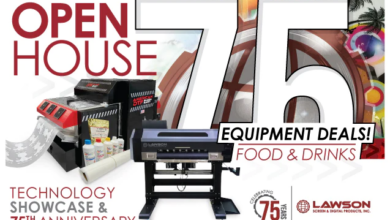
Specialty heat transfer vinyl (HTV) could be anything outside the normal solid-color HTV. There are many options, including glitter, dimensioned ultra-thick, reflective, metallic, patterned, perforated, and embossed. There are even special-effect heat transfers that change color when heated or exposed to UV light, glow in the dark, and even chalkboard HTV that you can write on with chalk and chalk markers. With so many specialty heat transfers on the market, it can seem overwhelming.
Specialty HTVs are typically more expensive than plain solid colors. Make sure you get the most out of the material by always testing the cut quality before starting a job. Some materials such as flocks and dimensional ultra-thick usually require a higher degree angled blade. Use the correct blade angle for the material, and make sure the blade is sticking out far enough to get through.
Stiffer materials, such as mirror-finish metallics, need a lot more downforce or pressure when cutting. To keep the cut strip in good condition, slowly increase the downforce and test each time instead of starting high. Gouging out the cut strip in the test cut area degrades any future cutting results.
Cutting glitters and reflective HTV can have a sandpaper effect on blades. Even if a test cut is done, only run 3′-4′ at a time, and check the quality of the last lines cut before starting the next run. Working with rougher materials like this isn’t a set it and forget it situation. There is nothing worse than having to recut part of a job because the blade went completely dull partway through cutting.
Find more on how to be successful with specialty transfers here.




